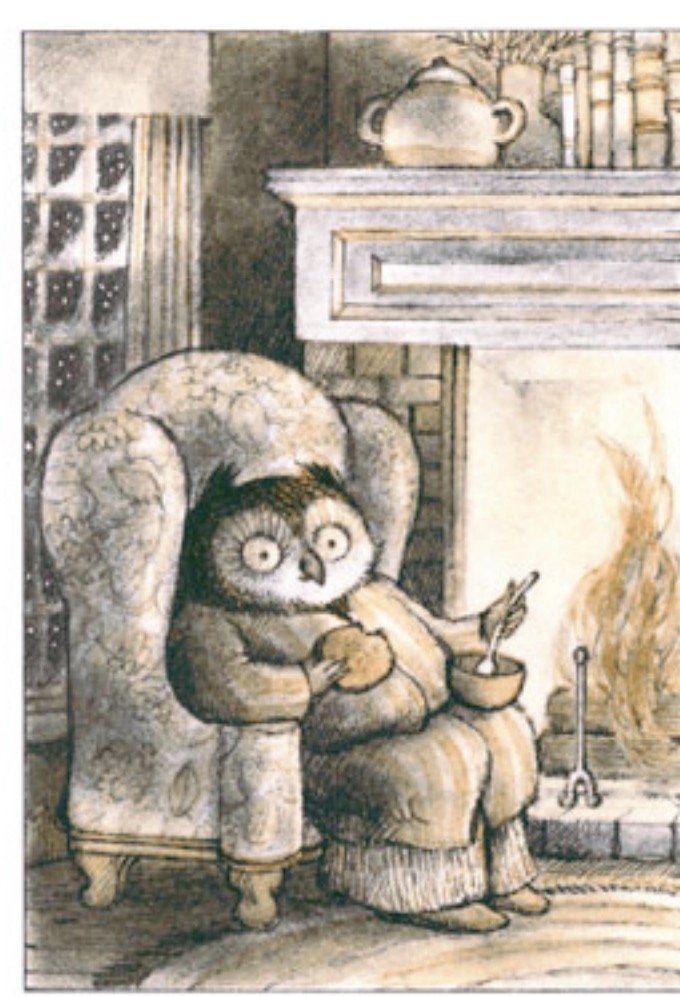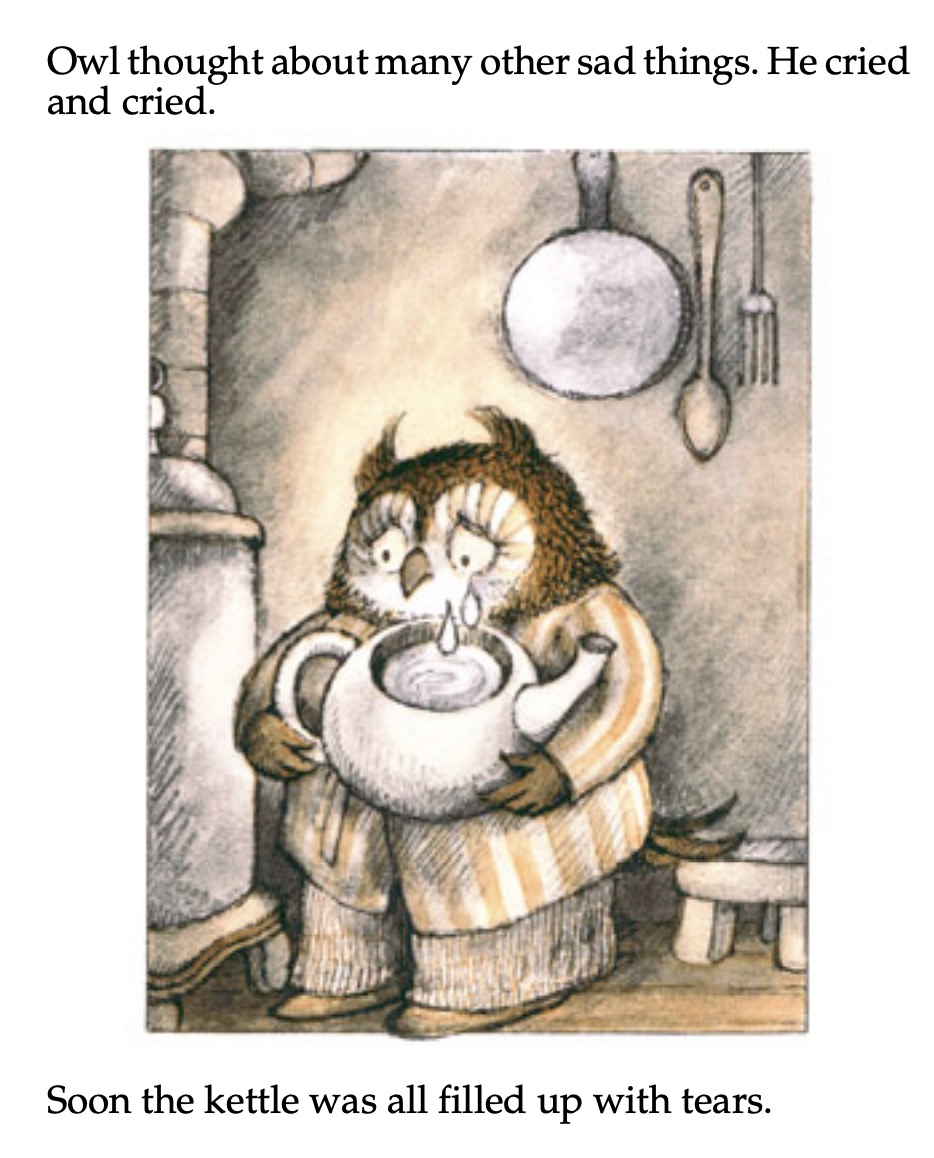Owl at Home

One in a series of posts dedicated to pop-culture depictions of owls — as stand-ins for educated, highbrow humans — from 1924–1983. The series derives its title from Owl’s home in A.A. Milne’s Winnie-the-Pooh stories.
Arnold Lobel’s 1975 children’s book Owl at Home is a lovely I Can Read book about a bookish, semi-reclusive owl who gets himself into various domestic jams and mishaps because of a certain innate cluelessness.

Compare with the bookish, apartment building-dwelling owl in Paula Scher and Stan Mack’s 1973 children’s book The Brownstone. Both characters remind us of
Henry Bemis, a bookish little man with thick horn-rimmed glasses [who] wants only one thing out of life; the time to read. Reading is his only passion in an otherwise mundane existence….
Rod Serling, The Twilight Zone (November 20, 1959)

